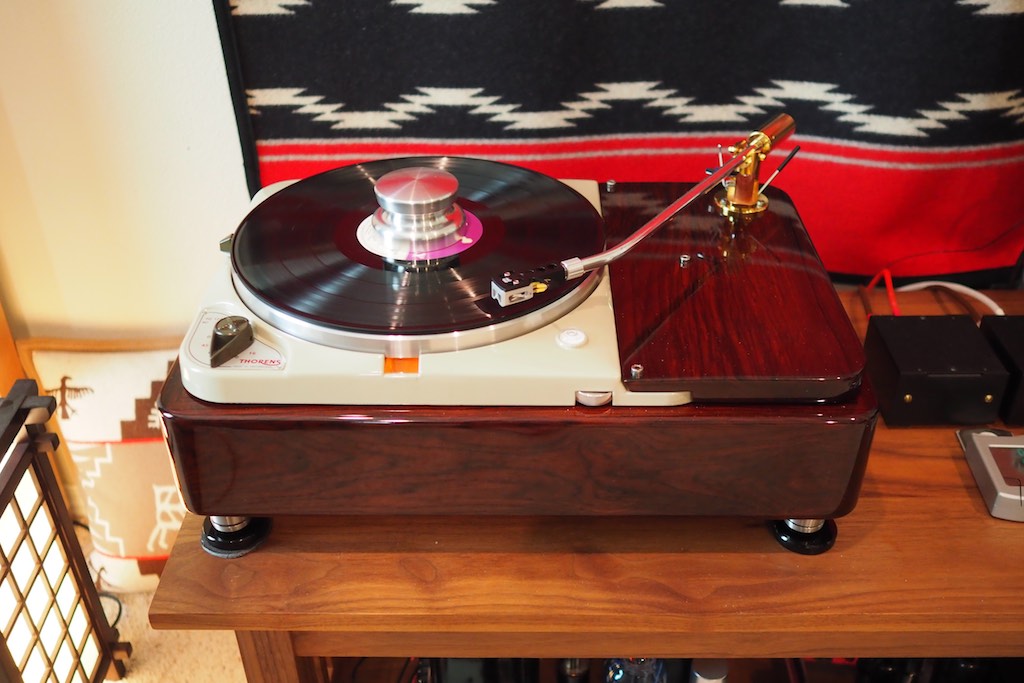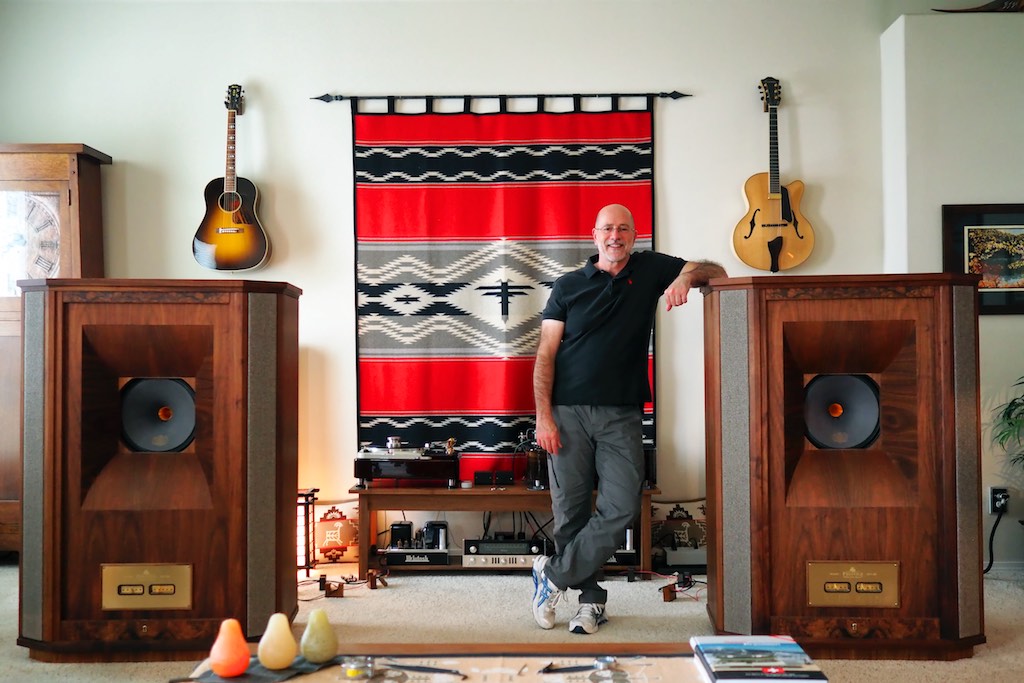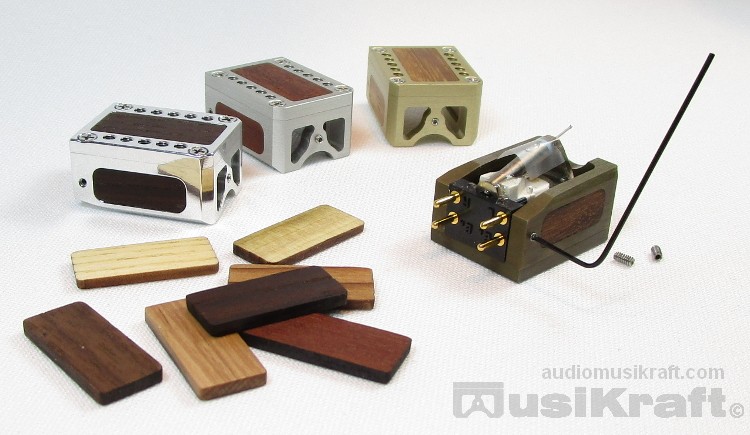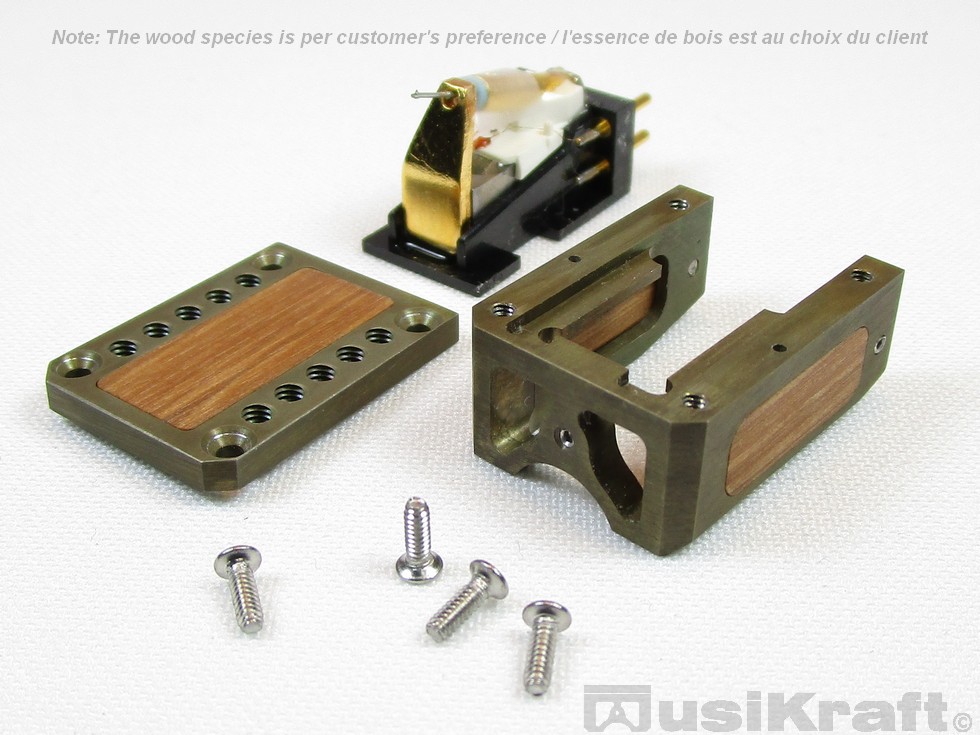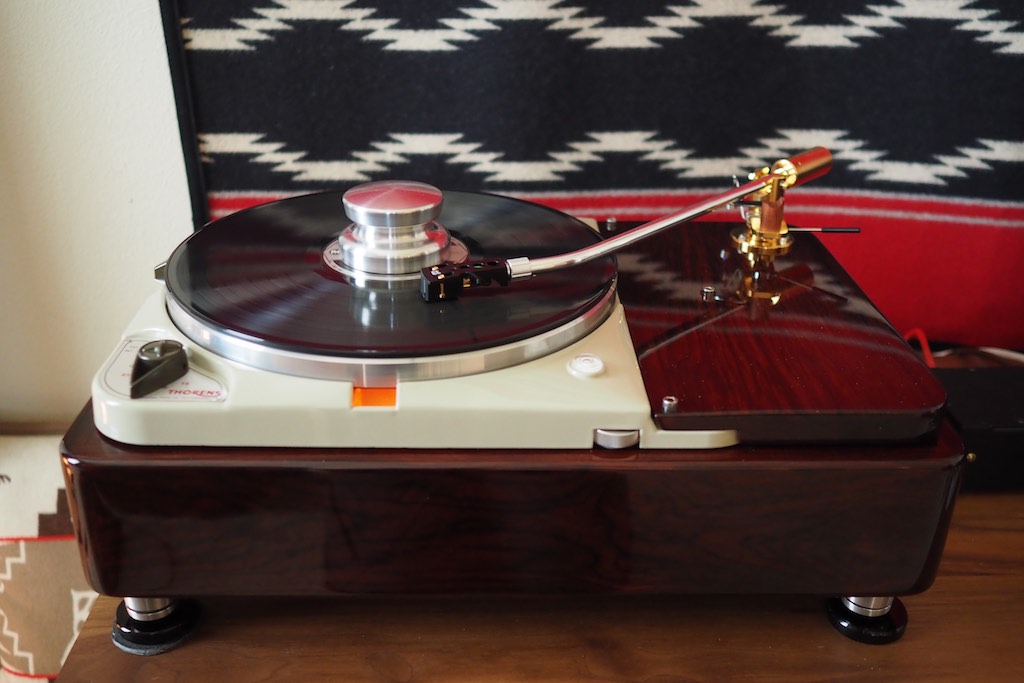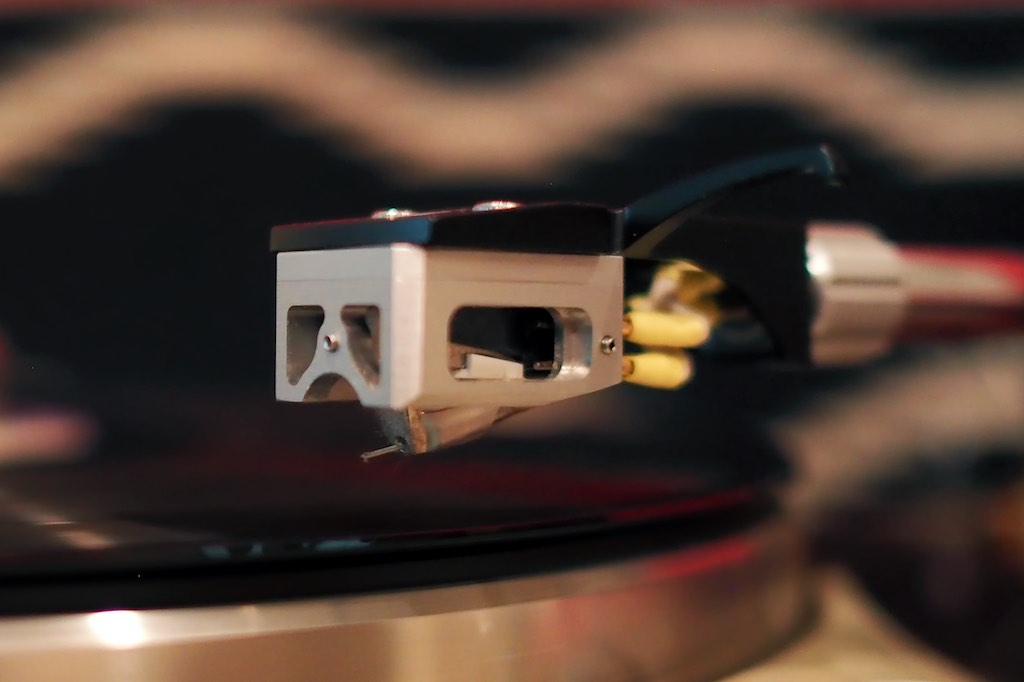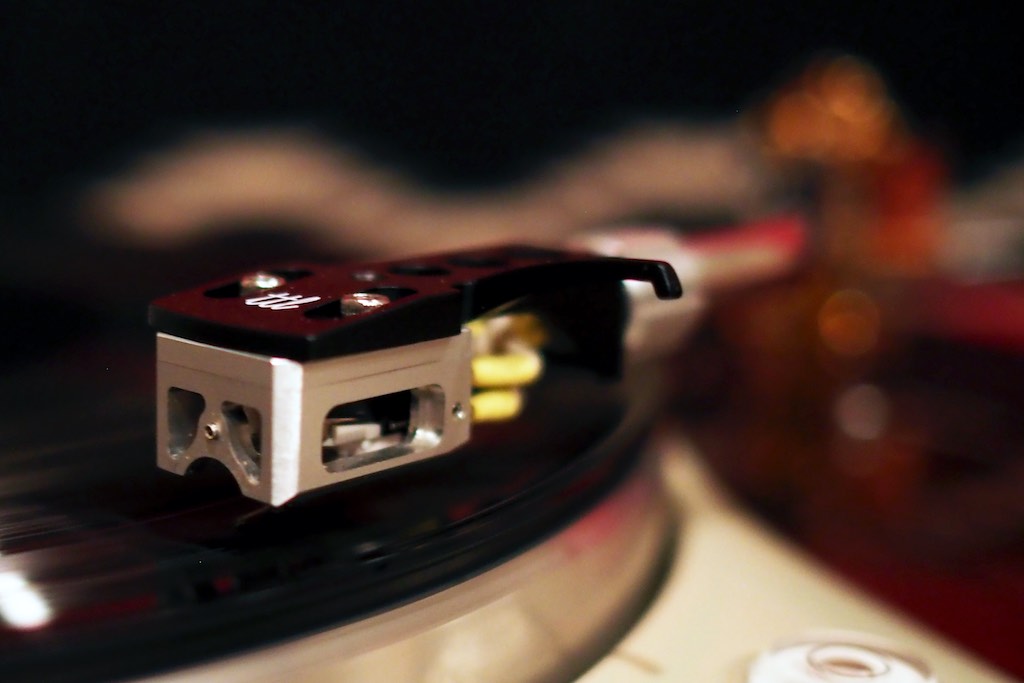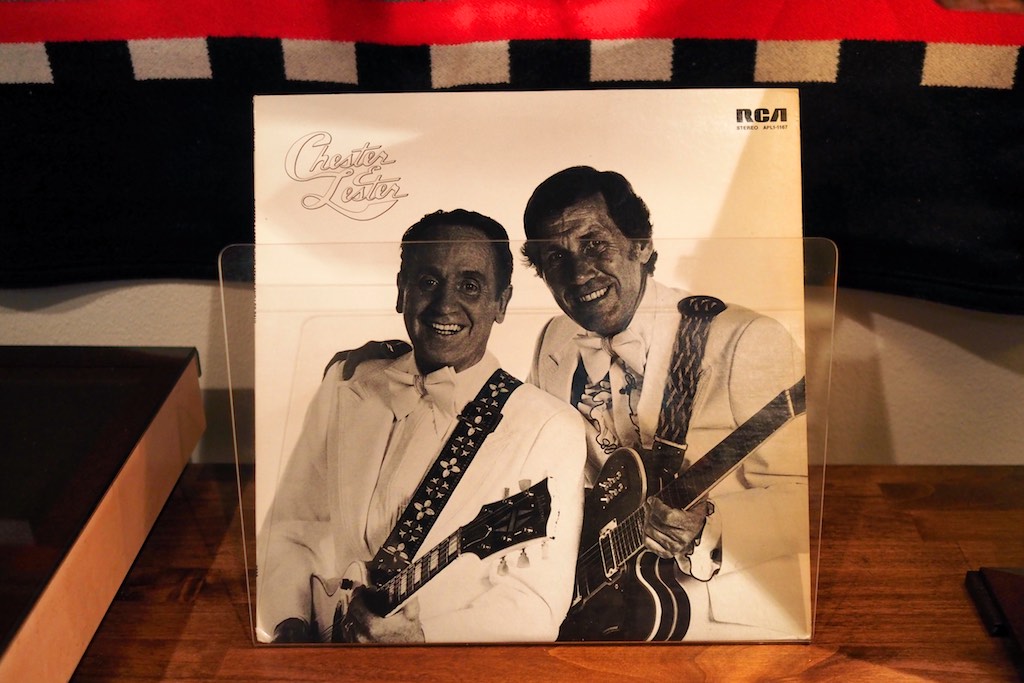I've been enjoying listening to and experimenting with the voicing of Guy Pelletier's "tunable" Audio MusiKraft Denon DL-103 phonograph cartridge on my restored and "hot-rodded" vintage Thorens TD-124.
As is my custom, I like to blog about my "getting acquainted" stage with new audio products, offering first impressions about the quality, ease of use, sonic & musical performance, value, and practicality of a product.
Then, after I feel I am fully acquainted with the product, I delve into the full detailed review process, and ultimately write up my results for Positive Feedback.
I think that offers you transparency into my growing level of understanding of a product's performance and overall value, giving you glimpses into how I optimized its performance in my system over time, telling you new things I've learned about it, and sharing my growing understanding of a product's strengths and weaknesses.
While I'm still solidly in the get acquainted stage with the Audio MusiKraft Denon DL-103, I have positive first impressions of it.
As you know, I'm a big fan of carefully voicing my hifi systems to dial-in the musical & sonic performance just the way I like it.
I like to combine careful choices of components, along with select modifications, the use of selected-by-ear capacitors, resistors, inductors, vacuum tubes, wire, etc., along with careful system setup, to achieve the system voicing I'm after.
In fact, in my primary music system (above), every single component is hot-rodded and voiced with select modifications, from source to speakers.
For my tastes, I think it sounds darn good.
I guess I should have said almost every single component has been hot-rodded, as I haven't performed any modifications on my phonograph cartridges yet, although I have been contemplating it! 😉
Enter the hot-rodded and tunable Audio MusiKraft Denon DL-103, with its custom machined cartridge shell with multiple tunability features.
First of all, as you might imagine, I was impressed by the Audio MusiKraft Denon DL-103's tunable nature, which allows the listener to voice it to accomodate their system's needs, and their personal tastes.
The ability to voice the Audio MusiKraft Denon DL-103 fits perfectly with my own personal sensibility of voicing my system to sound just the way I like it musically & sonically.
The Audio MusiKraft custom machined cartridge shell that replaces the Denon DL-103's stock plastic cartridge shell is a work of audio art all by itself, and its level of quality, fit, and finish impressed me from the first moment I inspected it and held it in my hand.
In my first preliminary listening session where I compared the Audio MusiKraft Denon DL-103 to my stock Denon DL-103, I gained valuable insights into how important the quality of the cartridge shell is to overall performance of a cartridge, and the Audio MusiKraft Denon DL-103, with the custom machined aluminum cartridge shell, made short work of my stock Denon with its plastic shell.
I’ve always liked the Denon DL-103, as many of you do, and for good reason, as it’s got a great balance of musicality & sonics at an extremely friendly price point for its rather lofty level of performance.
While I'm a big fan of the stock Denon DL-103, it was no match for the Audio MusiKraft Denon DL-103 with its custom machined aluminum cartridge shell.
The Audio MusiKraft Denon DL-103 was substantially better musically & sonically than my stock DL-103 in every way.
The stock Denon DL-103 has a somewhat tipped-up top-end and a slightly emasculated & unresolved bass response, which disappears with the aluminum cartridge shell equipped Audio MusiKraft Denon DL-103, which has a nicely balanced top-to-bottom presentation that I find a lot more musically & sonically pleasing than the stock Denon's.
The Audio MusiKraft custom machined aluminum shell really gave me a sense of the substantial hidden potential of the Denon DL-103, but rather than reiterating it here, I'll let you go back and read my first impressions post here, and of course I'll go into much more depth in the coming review.
Even without considering any of the tunability features of the Audio MusiKraft Denon DL-103, the performance improvement yielded from adding the machined aluminum cartridge shell would alone make it an easy recommendation.
My "first tune" foray into experimenting with the Audio MusiKraft Denon DL-103's rear tuning screws was illuminating.
As I mentioned in my last post, the Audio MusiKraft Denon DL-103 comes without the rear tuning screws engaged, with the idea being that you should become familiar with its performance and establish a musical & sonic baseline, before you start experimenting with its voicing.
The first few times I adjusted the rear tuning screws I was very careful to adjust them in until they just touched the Denon DL-103's plastic inner chassis, and then I tensioned them.
After I had practiced the tensioning procedure a couple of times and knew what to expect, it was just a few seconds on each side to adjust the rear tuning screws during listening trials.
Quick and easy.
Here's the tensioning procedure I found to work well:
When the rear tuning screws are fully disengaged you can see a couple of threads visible outside of the aluminum cartridge shell, as above.
I inserted the long leg of the supplied hex wrench into the tuning screws, which turn freely when not engaged against the inner chassis. As I screwed them in I could feel a little bit of resistance on the hex wrench when they made first contact with the inner plastic chassis of the Denon DL-103.
From the point where the tuning screws make first contact with Denon's inner chassis, you can adjust them up to a quarter of a turn to apply tension to the inner chassis.
I used the short leg of the hex wrench like a clock hand to indicate position, and then torqued the tuning screw down an additional quarter of turn to apply tension to the Denon's inner chassis.
As you start to experiment, Guy recommends listening to the cartridge at three settings for the rear tuning screws: disengaged, engaged at the first contact point, and engaged with up to a quarter turn of tensioning applied to the inner chassis.
For my first tuning trial with the rear tuning screws I didn't do that, I just listened to them disengaged, and then engaged with a full quarter turn of tensioning, so I could get an idea of the effect at each end of the adjustment range.
My preliminary impressions are that applying tension via the rear tuning screws is that it damps down the Denon's inner chassis a bit, like a resonance control for the plastic inner chassis.
I thought engaging the rear tuning screws improved the overall tonality and musicality of the Audio MusiKraft Denon DL-103, presumably by subtly improving the signal-to-noise ratio.
I noticed that putting tension on the Denon's inner chassis with the rear tuning screws emphasized the musical aspects of recordings, like timbre and tone color, for example, which in my system made the music sound more "real" and natural.
With the rear tuning screws disengaged from the Denon's inner chassis, the recording artifacts had more emphasis (e.g. soundspace), and overall the Denon sounded more spacious and resonant, giving more of an audiophile-style balance.
I think the additional spaciousness and resonance I heard with rear tuning screws disengaged was actually representative of an increased level of noise in the signal-to-noise ratio, as it also subtly decreased tonal & timbral nuance by blurring it. Those who prefer a greater sense of space may wish to leave the rear tuning screws disengaged.
Presumably, by fine tuning between the two extremes of having the rear tuning screws disengaged, and engaged with a full quarter turn of tensioning, allows the listener to dial in a favored balance of musicality and sonics.
As my listening and familiarity with the Audio MusiKraft Denon DL-103 grows, I'll explore more of the fine tuning aspects of the rear tuning screws.
The magnitude of change I heard from adjusting the rear tuning screws was much more subtle than the large improvement realized by replacing the stock plastic Denon cartridge shell with the machined aluminum Audio MusiKraft cartridge shell, however, I did find the rear tuning screws to be a useful and desirable way to adjust the cartridge's voicing.
You can read more details about the result of my first impressions for adjusting the rear tuning screws here.
Ok, with that little recap concluded, let's go on to my "second tune" adventure with the Audio MusiKraft Denon DL-103, adjusting the front tuning screw that tensions the front pole piece of the Denon DL-103.
Second Tune: Adjustment of the Front Tuning Screw that Contacts the Pole Piece of the Denon DL-103
If you look at the cartoon below from my Denon DL-103's owner's manual, you can see the pole pieces positioned at each end of the magnet.
The front tuning screw (below) can be adjusted to apply tension to the front pole piece of the Denon DL-103.
Guy recommends a similar sort of adjustment / listening regimen for the front tuning screw as he does with rear tuning screws: disengaged, engaged but just touching the pole piece, and engaged with up to an eighth turn of tensioning on the pole piece.
Guy suggests very tiny and careful adjustments to the front tuning screw up to its eighth turn maximum, and he says that even very small tensioning adjustments make a dramatic difference to the cartridge’s sound.
Equipped with that knowledge about the front tuning screw, I thought I'd begin my "second tune" adventure with the Audio MusiKraft Denon DL-103.
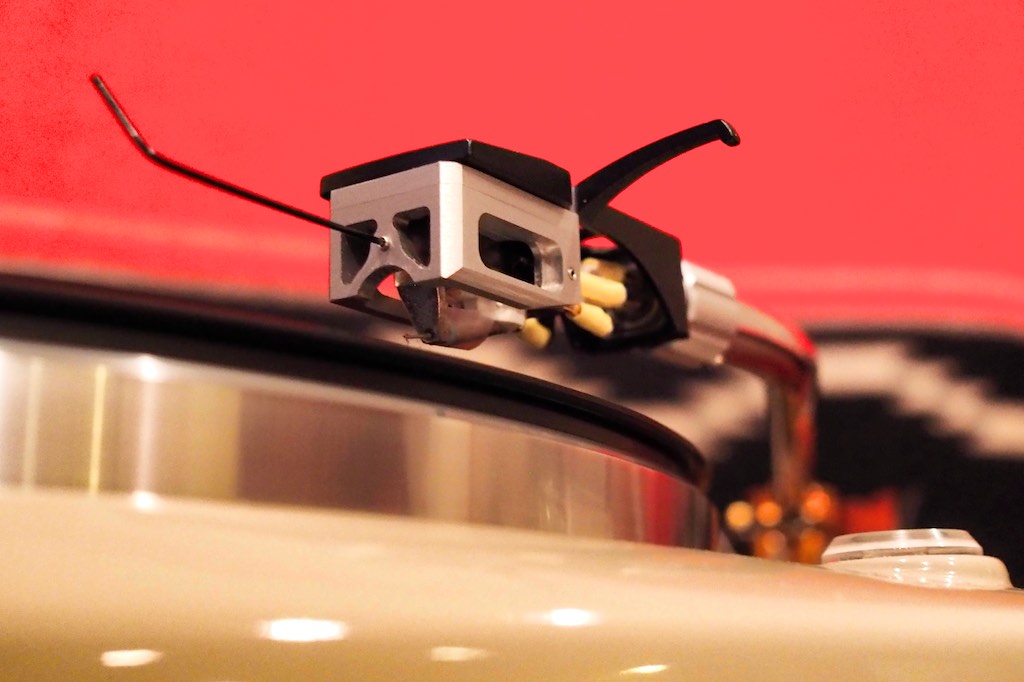
Hex wrench inserted into the front tuning screw that tensions the front pole piece of the Denon DL-103.
I thought the Chester & Lester album (RCA, 1976) with Chet Atkins and Les Paul would be a fun place to start.
To start my adventure I listened to Chester & Lester with both the front & rear tuning screws disengaged to establish a baseline.
Chet Atkins' and Les Paul's guitar playing is fantastic, and the Audio MusiKraft Denon DL-103 let's their virtuosic playing, interplay, and technique come through beautifully.
Overall tone was gorgeous, the music was extraordinary, and really I found nothing to criticize with the way the Audio MusiKraft Denon DL-103 rendered the performances of these two great guitarists.
When the front adjustment screw is disengaged, with a couple threads showing outside the cartridge shell (as in a couple phots above), you have to screw it quite a ways in before it touches the pole piece.
While wearing my Bausch & Lomb Magnifying Visor, when I looked in at an angle through the right front opening in the cartridge shell, I could actually see when the tuning screw made first contact the pole piece.
I could feel it in the hex wrench too, as the metal pole piece pretty much brings the hex wrench to a stop when the tuning screw contacts it.
In some ways, adding tension to the front pole piece via the front tuning screw is similar to the effect of tensioning the Denon's plastic inner chassis with the rear tuning screws, but the magnitude of the effect is quite a lot greater with the front tuning screw.
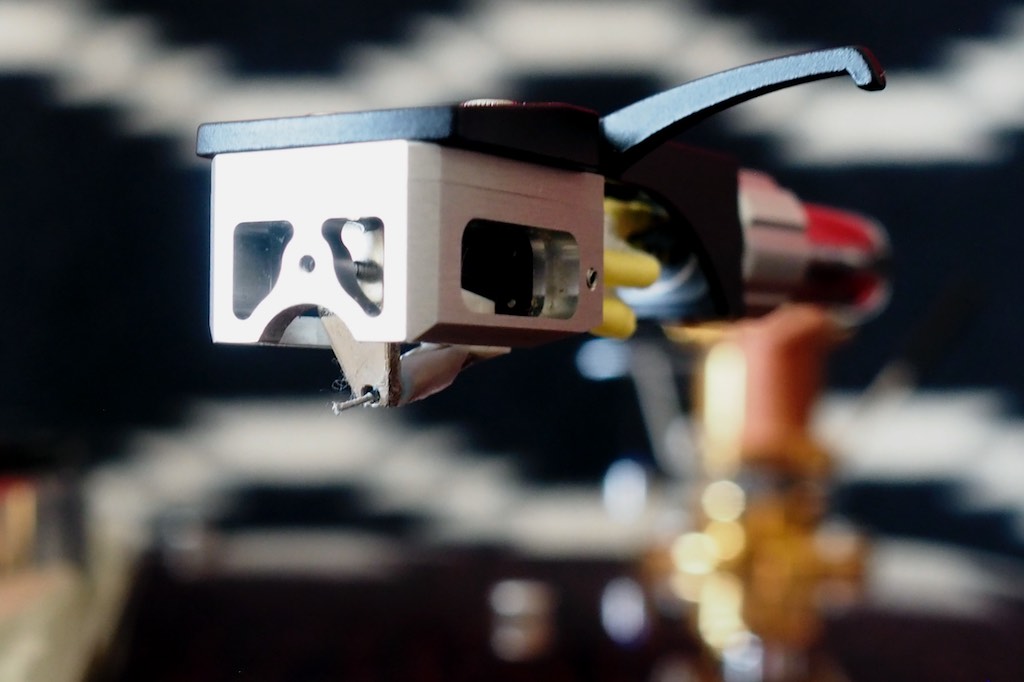
I you look through the right window in the front of the cartridge, you can see tuning screw in contact with the pole piece.
At the first contact point of the tuning screw on the pole piece, I heard the music become more present in the room, and the tone of the notes was rounder and more of a whole than with the front tuning screw disengaged, where in contrast the leading edge of the notes was somewhat emphasized, and with notes sounding a little more direct and crisp.
I also heard additional nuance in the fine timbral detail, and the tone sounded more saturated and vibrant. The bass response also became more resolved, detailed, and realistic sounding.
The overall effect was that it brought the instruments into the room more, charging the room with more presence, excitement of musicians playing.
Also, the contrast between the musical notes and the "black space" around them was greater, with the notes having more presence and dynamic "pop", which helped emphasize beat and melodic dynamcs.
I like what I heard at the first contact point of the tuning screw on the front pole piece, it made the music sound more real, present, more tonally saturated and vibrant, with better rendition of low and mid-level dynamics, which helped beat become more distinct, and bass lines more resolved and nuanced.
Satisfied with the result at the first contact point, I thought I would apply an eighth turn of tensioning to hear where that would take me.
I heard additional gains in presence, resolution, tonal saturation, and bass definition with an eighth turn of tension applied to the front pole piece.
At this point I can't really say that I preferred the tuning screw's first contact point over what it sounded like with an eighth turn of tensioning applied, as I need to do some additional listening, but I definitely preferred both of those settings to having the front tuning screw disengaged.
One thing is abundantly apparent is that the stock Denon DL-103 is capable of a rather remarkable level of performance if you optimize its performance with the addition of a tunable Audio MusiKraft shell.
I posit that with both the front & rear tuning screws, when they are engaged they provide a damping effect that reduces vibration in the metal pole piece and the plastic inner chassis, respectively, with the effect of improving the signal-to-noise ratio somewhat.
I also posit that the rigidity of the machined cartridge shell over the stock plastic shell provides for a more stable mount for the cartridge, with its greater mass acting to minimize vibration, improving the performance of the Denon commensurably.
For example, as a young scientist, many years ago now, when I was preparing very accurate samples for analysis during research, I would place the ultra-sensitive Mettler balance atop a big pile of lead bricks to isolate it from vibration. Adding lots of mass under the Mettler definitely lowered the vibration and allowed it to weigh smaller mass amounts much more accurately.
These days you would probably use a Terra Universal vibration isolation table, or something similar, but back before they were available, mass loading with lead bricks worked very well.
I will further speculate and say that I would expect that the atomic mass of the material used to machine the cartridge shell out of would also effect vibrational characteristics and the voicing of the cartridge, which no doubt is why Guy offers cartridge shells machined from aluminum (11.4 grams), aluminum-lithium (11.2 grams), and magnesium (10.0 grams).
Aluminum has an atomic mass of 26.982, lithium has an atomic mass of 6.94, and magnesium has an atomic mass of 24.305. All of these elements are relatively light as elements go.
For example, as additional reference points, titanium has an atomic mass of 47.867, iron has an atomic mass of 55.845, copper has an atomic mass of 63.546, silver has an atomic mass of 107.87, and lead has an atomic mass of 207.2.
The Murasakino Sumile phonograph cartridge, for reasons of mass and rigidity, for example, uses a gold-plated machined stainless steel base for the cartridge's inner chassis, and a machined aluminum cartridge shell.
Rigidity and mass matter, because rigidity and mass isolation provides a more stable platform for the the cartridge's motor assembly to accurately trace the signal recorded on the disc, the result being a more accurate signal. Less rigidity and less mass raises the signal-to-noise ratio of the signal, which degrades performance.
I think Guy Pelletier's approach with the Audio MusiKraft Denon DL-103 is brilliant. It utilizes a rigid and relatively high-mass machined shell, along with the ability to tension both the Denon's inner plastic shell and its front pole piece, as well as being able to do additional voicing with top and side panel wood inserts.
All that quality machining and adjustability probably sounds like it is going to make for an expensive cartridge, but the Audio MusiKraft Denon DL-103 that Guy sent me sells for the astonishingly affordable price of $579, making it one of the highest value audio products that I have ever written about, from a cost-to-performance standpoint.
I'm just getting started on exploring the performance envelope and adjustability of the Audio MusiKraft Denon DL-103 phonograph cartridge, so I'll have a lot more to say about it as we get better acquainted.
As always, thanks for stopping by, and may the tone be with you!




